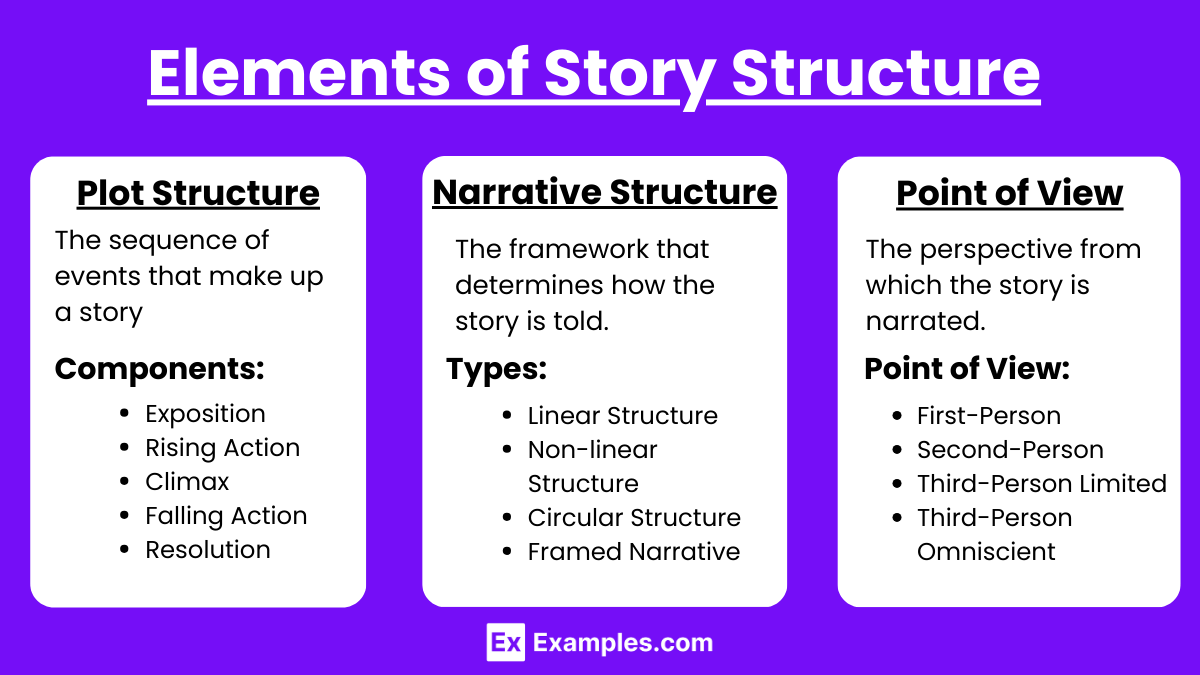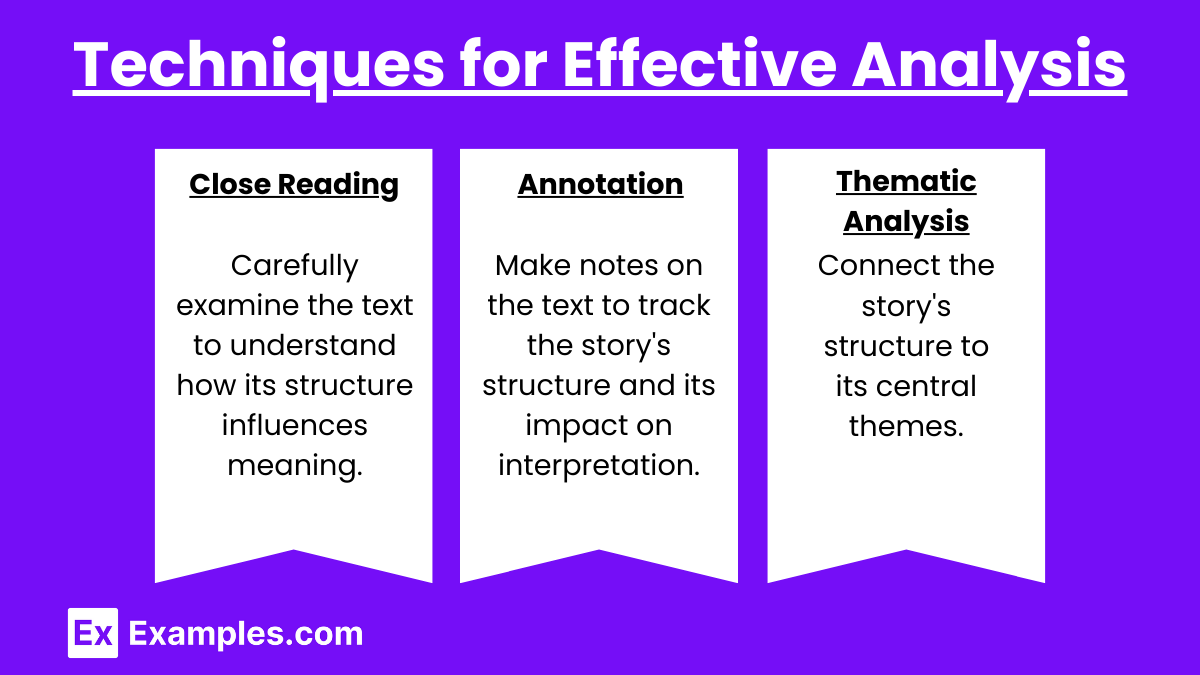In the AP English Language and Composition exam, understanding how a story’s structure affects interpretations is crucial for crafting insightful and persuasive analyses. Whether engaged in argumentative writing or delivering an argumentative speech, recognizing the influence of narrative techniques, plot structure, and point of view allows you to use rhetorical sentences and cumulative sentences effectively. The structure of a story shapes how readers perceive and understand its themes, characters, and events. By mastering this skill, you can enhance your ability to critically analyze texts, making your arguments more compelling and nuanced, and providing deeper insights into the literature you study.
Learning Objectives
By studying the topic of understanding how a story’s structure affects interpretations, students will achieve several key learning objectives. They will enhance their critical thinking skills by analyzing the influence of narrative techniques, plot structure, and point of view. Students will learn to use cumulative sentences and rhetorical sentences to craft insightful analyses in explanatory essays and expository essays. They will develop the ability to formulate a strong final thesis statement that effectively incorporates their interpretations of the story’s structure. Mastery of these techniques will enable students to produce well-structured, engaging, and persuasive literary analyses.
Elements of Story Structure

1. Plot Structure
- Definition: The sequence of events that make up a story.
- Components:
- Exposition: Introduces the background information, characters, and setting.
- Rising Action: Builds tension and develops the conflict.
- Climax: The turning point of the story, where the main conflict reaches its peak.
- Falling Action: The events that follow the climax and lead to resolution.
- Resolution: The conclusion where conflicts are resolved, and the story ends.
2. Narrative Structure
- Definition: The framework that determines how the story is told.
- Types:
- Linear Structure: The story is told in chronological order.
- Non-linear Structure: The story includes flashbacks, flash-forwards, or other deviations from chronological order.
- Circular Structure: The story ends where it began, creating a sense of completeness.
- Framed Narrative: A story within a story, providing different perspectives.
3. Point of View
- Definition: The perspective from which the story is narrated.
- Types:
- First-Person: Narrated by a character using “I” or “we.”
- Second-Person: Uses “you,” making the reader a character in the story.
- Third-Person Limited: The narrator knows the thoughts and feelings of one character.
- Third-Person Omniscient: The narrator knows the thoughts and feelings of all characters.
Analyzing the Impact of Structure on Interpretation
Plot Structure
- Creating Tension and Suspense: The arrangement of events can build tension and keep readers engaged.
- Example: A well-crafted rising action leads to an intense climax, heightening emotional impact.
- Emphasizing Themes: The resolution can reinforce the central themes of the story.
- Example: A story resolving with justice served underscores themes of morality and fairness.
Narrative Structure
- Chronological Order: Provides clarity and straightforward storytelling.
- Example: A linear structure helps readers follow the logical progression of events.
- Non-linear Order: Adds complexity and depth, requiring readers to piece together the timeline.
- Example: Flashbacks reveal a character’s past, adding layers to their motivations and actions.
- Circular Structure: Creates a sense of inevitability and reflection.
- Example: Ending a story where it began can highlight changes in characters or circumstances.
- Framed Narrative: Offers multiple perspectives and a deeper understanding of the story.
- Example: A framed narrative can provide contrasting viewpoints, enriching the reader’s interpretation.
Point of View
- First-Person: Creates intimacy and a personal connection with the narrator.
- Example: Readers experience events directly through the narrator’s perspective, enhancing emotional engagement.
- Second-Person: Engages the reader by placing them in the story.
- Example: The use of “you” makes the reader an active participant in the narrative.
- Third-Person Limited: Provides insight into one character’s thoughts while maintaining some narrative distance.
- Example: Readers understand the protagonist’s inner conflicts without losing objectivity.
- Third-Person Omniscient: Offers a comprehensive view of all characters and events.
- Example: The omniscient perspective allows for a broader understanding of the story’s themes and dynamics.
Techniques for Effective Analysis

Close Reading
- Definition: Carefully examine the text to understand how its structure influences meaning.
- Technique: Highlight key events, shifts in time, and changes in perspective.
Annotation
- Definition: Make notes on the text to track the story’s structure and its impact on interpretation.
- Technique: Write comments in the margins about the significance of structural elements.
Thematic Analysis
- Definition: Connect the story’s structure to its central themes.
- Technique: Identify how the arrangement of events and narrative choices reflect or enhance the themes.
Examples
Example 1: Analyzing Structure in “To Kill a Mockingbird”
- Plot Structure: The story follows a linear progression with a clear exposition, rising action, climax, falling action, and resolution.
- Impact on Interpretation: The linear structure emphasizes the growth and moral development of Scout and Jem, reinforcing themes of justice and empathy.
Example 2: Analyzing Structure in “The Great Gatsby”
- Narrative Structure: The story uses a framed narrative with Nick Carraway as the first-person narrator, recounting past events.
- Impact on Interpretation: The framed narrative provides a reflective and biased perspective, influencing how readers perceive Gatsby and the other characters.
Example 3: Analyzing Structure in “Slaughterhouse-Five”
- Narrative Structure: The story employs a non-linear structure with frequent flashbacks and flash-forwards.
- Impact on Interpretation: The non-linear structure mirrors the protagonist’s fractured experience of time and trauma, emphasizing themes of fate and free will.


